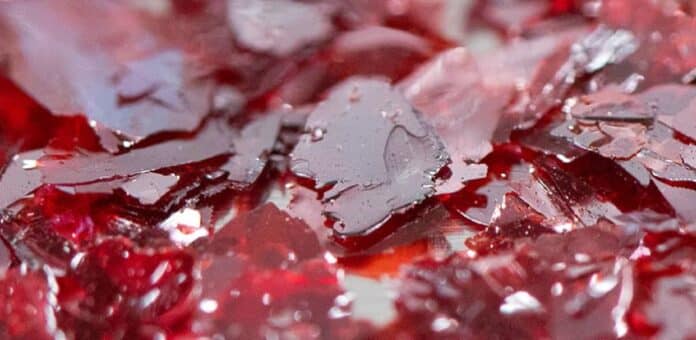Advanced X-ray imaging techniques, such as X-ray fluoroscopy, have improved medical care, but reducing the X-ray dose rate would reduce patient harm and enable new applications. The lowest dose rate of X-rays detectable by radiology instruments is currently set by the attenuation materials used in the detectors.
A team of researchers led by the Universities of Oxford and University of Cambridge discovered that bismuth oxy iodide (BiOI), a solar cell material, can detect X-ray dosage rates almost 250 times lower than the best commercially available detectors. This has the potential to make medical imaging safer while also opening up novel opportunities for non-invasive diagnostics such as X-ray video approaches.
Dr. Robert Hoye from the University of Oxford, who led the work, said, “We have developed BiOI single crystals into X-ray detectors that work over 100 times better than the current state-of-the-art for medical imaging. BiOI is nontoxic, stable in the air, and can be grown cost-effectively and at scale. We are very excited by the potential BiOI has to make the next generation of non-invasive diagnostics more accessible, safer, and more effective.”
BiOI is a nontoxic semiconductor that absorbs visible light and maintains its stability in the air. Because of these properties, there has been a rise of interest in this material over the last decade for solar cells (converting sunlight into clean electricity), photoelectrochemical cells (converting sunlight into fuels), and energy harvesting to power smart devices, among many other applications.
Previous attempts to turn BiOI into X-ray detectors failed due to high energy losses caused by faults caused by the detectors’ nanocrystalline structure.
The researchers created and patented a method for utilizing scalable vapor-based techniques to generate high-quality single crystals of BiOI.
The stable and ultra-low dark currents produced by these crystals’ low defect density were essential for significantly raising the material’s X-ray sensitivity and detection limit.
Professor Judith Driscoll from Cambridge’s Department of Materials Science and Metallurgy, who co-led the work, said, “Showing that these simply-processed, low-temperature grown, stable crystals can give such high sensitivity for X-ray detection is quite remarkable. We began working on this material, BiOI, several years ago, and we find it outshines other rival materials in a range of optoelectronic and sensing applications when toxicity and performance are considered together.”
The researchers created an interdisciplinary team to determine why BiOI works so effectively as an X-ray detector. They employed advanced optical techniques to resolve events occurring in trillionths of a second. They combined them with simulations to connect these processes to what is happening at the atomic level.
They discovered a unique route for electrons to connect to vibrations in the lattice, resulting in an irreversible energy loss channel. Unlike other bismuth-halide compounds, the electrons in BiOI remain delocalized, allowing electrons to flow easily and quickly inside the BiOI lattice.
At the same time, the unique electron interaction with lattice vibrations creates an irreversible energy loss route that would exist even if the material were defect-free.
To overcome these losses, either cool down the sample to reduce thermal energy or apply an electric field to pull electrons from the lattice. The latter case is perfectly compatible with how X-ray detectors work.
Electrons can be transferred over a millimeter-length scale by generating a small electric field. This allows for the effective extraction of electrons created in single crystals by X-ray absorption.
Dr. Bartomeu Monserrat from Cambridge’s Department of Materials Science and Metallurgy, who co-led the project, said, “We have built a microscopic quantum mechanical model of electrons and ions that can fully explain the remarkable optoelectronic properties of BiOI that make it such a good material for X-ray detection.”
This provides a framework for developing different materials with similar favourable features. A new study sheds light on how to achieve delocalized charge carriers in bismuth-halide complexes.
The researchers are now focusing on developing materials with similar favourable features to BIOI, as well as how to alter the composition of BIOI to optimize its transport properties even further.
They are also working to bring the unique benefits of BIOI to society by developing methods to increase the scale of BIOI detectors while preserving the extraordinary features observed in single crystals.
The study also involved researchers from Imperial College London, Queen Mary University London, Technical University Munich, and CNRS in Toulouse.
Journal Reference:
- Jagt, R.A., Bravić, I., Eyre, L. et al. Layered BIOI single crystals capable of detecting low dose rates of X-rays. Nature Communication. DOI: 10.1038/s41467-023-38008-4
